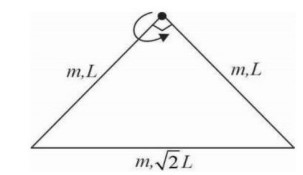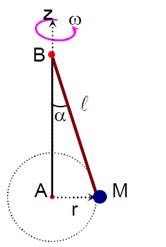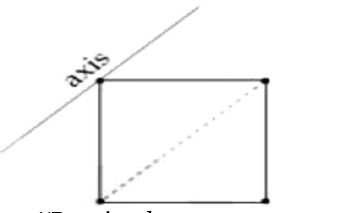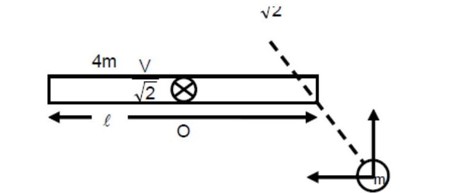Angular Momentum of Rotation About a Fixed Axis
Get insights from 9 questions on Angular Momentum of Rotation About a Fixed Axis, answered by students, alumni, and experts. You may also ask and answer any question you like about Angular Momentum of Rotation About a Fixed Axis
Follow Ask QuestionQuestions
Discussions
Active Users
Followers
New answer posted
3 months agoContributor-Level 10
L = Iω
I = (mL²/3) + (mL²/3) + [m (√2L)²/12] + m (L/√2)² = mL² [2/3 + 1/6 + 1/2] = (4mL²/3); L = (4/3)mL²ω
New answer posted
3 months agoContributor-Level 10
Yes, an object moving in a straight path can also possess angular momentum with respect to a referenc epoint which doesn't lie on it's path. In such cases. the referenc epoint may lie perpendicular distance from the axis. If an object is moving in a straight line (not through the reference point) the perpendicular distance (l = rp) will be non-zero.
New answer posted
3 months agoContributor-Level 10
Yes, how much time these planets take in completing an orbit around the sun hugely depends on their distance from the sun as well as their mass. Since these planets move in a circular orbit, the term angular momentum is used in such cases for computing relevant information.
New answer posted
3 months agoContributor-Level 10
Angular momentum also depends on how the mass is spread over the body and not just mass only. If you closely look at the formula of angular momentum:
L=r*p
You will observe that it is a cross product of two vector quantities. Hence, the formula won't be practical without direction being involved.
New answer posted
3 months agoContributor-Level 9
Using conservation of Angular momentum along axis of rotation, we can write
Mr²ω = (Mr² + 2mr²)ω? ⇒ ω? = Mω / (M + 2m)
Taking an Exam? Selecting a College?
Get authentic answers from experts, students and alumni that you won't find anywhere else
Sign Up on ShikshaOn Shiksha, get access to
- 66k Colleges
- 1.2k Exams
- 680k Reviews
- 1800k Answers




